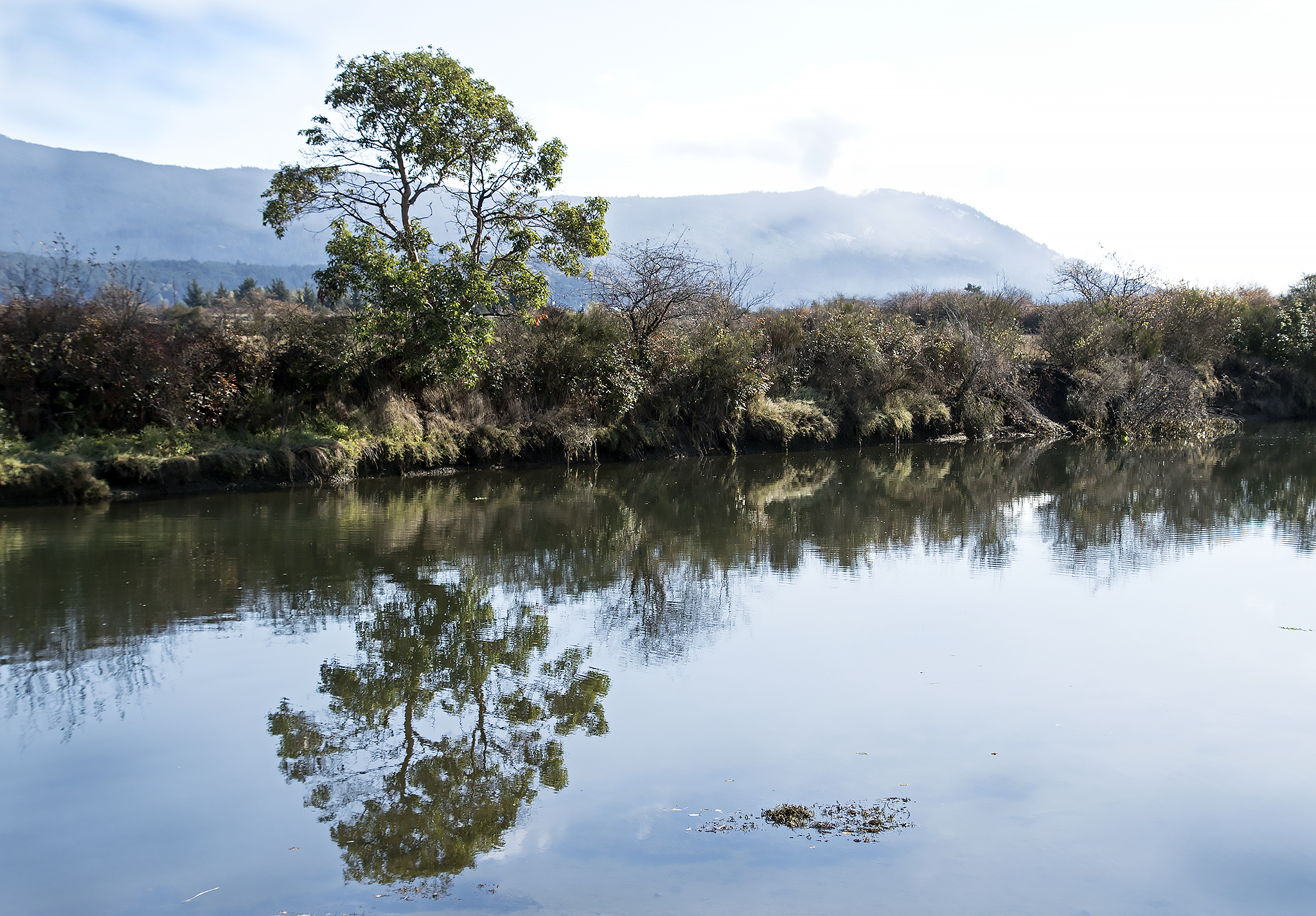
Being Water Wise
What Can I Do?
-
Even natural things like leaves, garden clippings, and soil can harm our waterways. Piles of lawn clippings or garden waste that are too close to the water’s edge can seriously degrade water quality. Leachate from these decaying materials uses up oxygen as it decays. If it enters a creek, it can take all of the oxygen out of the water, especially at times of low flow or when the water is warm. Taking oxygen away from the water can kill plants, fish and other animals that live in our waterways.
What you can do…
• Put leaves in the compost or in the garden as mulch
• Allow your grass clippings to decompose on the lawn, or place them in a proper compost
• Ensure your compost is covered, out of the flood plain, and not too close to the creek
-
Native plants along a shoreline protect water quality and provide critical habitat. A “buffer zone” of natural vegetation between your lawn or garden and the creek filters out toxins, prevents erosion, reduces flooding, keeps water cool, and provides food, cover, and shelter for fish and other wildlife. When native shrubs, fallen trees, grasses, and aquatic plants are removed from the shoreline, there is a significant reduction in water quality and severe impacts on salmon and other aquatic creatures.
A ground cover of turf grass does not provide enough of the functions of a buffer to help it be effective
What you can do…
• Retain a native buffer strip along your shoreline
• Increase your buffer for added protection
• Remove alien invasive plants, such as Himalayan blackberry and English ivy, which can interfere with proper buffer function. BE CAREFUL what time of year you do this, and always be gentle, creatures like frogs and newts might still be sheltering in invasive plants.
• If your buffer zone has already been altered, restore it! An established buffer of native plants requires no maintenance and reduced the time you spend working on your yard. Start by leaving that area unmowed (be careful to control invasive weeds), and let nature take over.
Contact HAT to learn more
-
Natural items in the creek – logs, sticks, and branches – are a vital part of fish habitat and water quality protection. They provide food, shade, hiding places, and resting places for small fish, and increase habitat diversity in the stream. They also help slow water flow, preventing flooding and increasing year-round flow.
What you can do…
• Don’t remove fallen trees, branches, and logs that are in the creek or along the bank
-
Cleaning paint brushes and rollers into gutters or drains put chemicals in the water which can poison frogs, fish, and other aquatic life.
What you can do…
• When using water-based paint, clean the brushes in a container on the grass. Dirty paint water can be poured onto the lawn and any paint residue placed in the bin.
• When using oil-based paint keep paint, turps and solvents clear of gutters and drains; allow unused paint to dry out and then put it in the bin.
-
Eroding soil doesn’t just reduce your property – it can also severely damage water quality. Sediment washing into the creek makes water cloudy and affects aquatic plants. Salmon spawning beds can become clogged so that fish can’t make their redds (spawning bed of Salmon and Trout). Silt can also suffocate fish and amphibians by clogging their gills.
What you can do…
• Cover piles of soil, sand, or mulch to stop them from washing into drains
• Don’t leave soil exposed! Replant right away
• Sweep your gutter and driveway rather than hosing them down
• Maintain a buffer strip of native vegetation to cover and hold soil
-
If you wash your car in the street or driveway, detergents, mud, oil and grease can wash directly into the stormwater system. Many detergents contain phosphates which over-fertilize waterways and can lead to a build-up of toxic algae which is harmful to fish, and humans, too.
What you can do…
• Try to wash your car on a grassy area which will filter phosphates slowly
• If you do not have a grassy area, visit a friend or relative who does – or go to a local carwash that treats their run-off
• Use as little detergent as you can and pour any leftover soapy water onto the lawn
• When cleaning under the car, check for any fluid leaks and get them repaired. Even one drop of oil can poison thousands of litres of water.
-
When dog droppings are left on the footpath they can wash into our waterways, where they can increase bacteria and nutrient levels. These excessive nutrients degrade water quality and can not only kill fish and plants, but they can also make water unsafe for human contact.
What you can do…
• When walking your dog, pick up droppings with a plastic bag and put them in the bin.
• If you want to compost your dog waste look for products like the Compost Cone available at the Compost Education Centre.
-
We all enjoy walking along waterways. But too many steps can trample vegetation that’s protecting the soil from eroding, and compact the soil so that plants have trouble establishing and tree roots cannot get the moisture and nutrients they need. Along many banks/shorelines in our area, there is nothing but bare dirt under the trees, and only a few alder roots keeping the banks from washing away.
What you can do…
• Stay on established trails to avoid trampling vegetation
• Leave fallen trees, branches, and washed-up logs where they are to prevent erosion
Protecting water quality is something that you can do from home.

